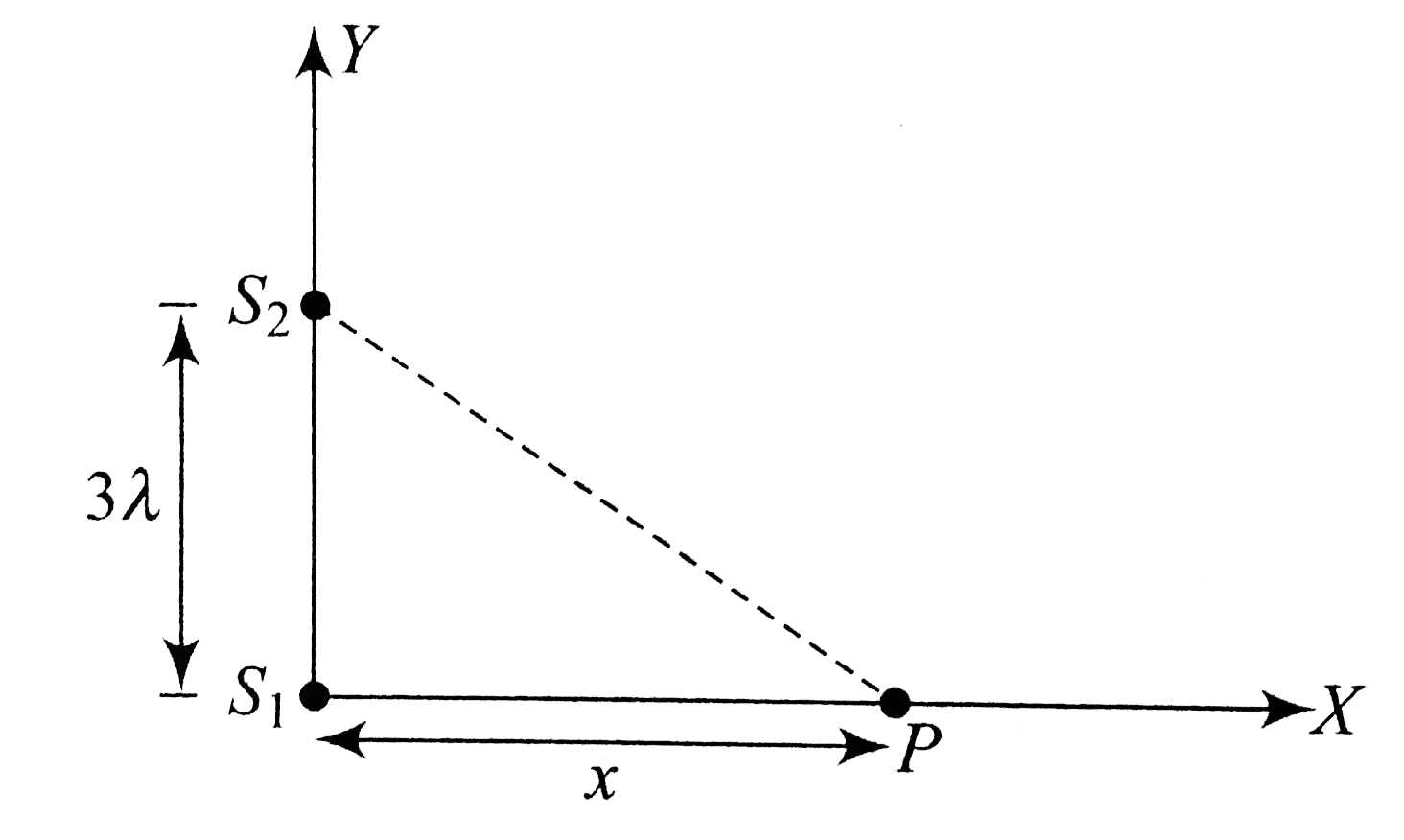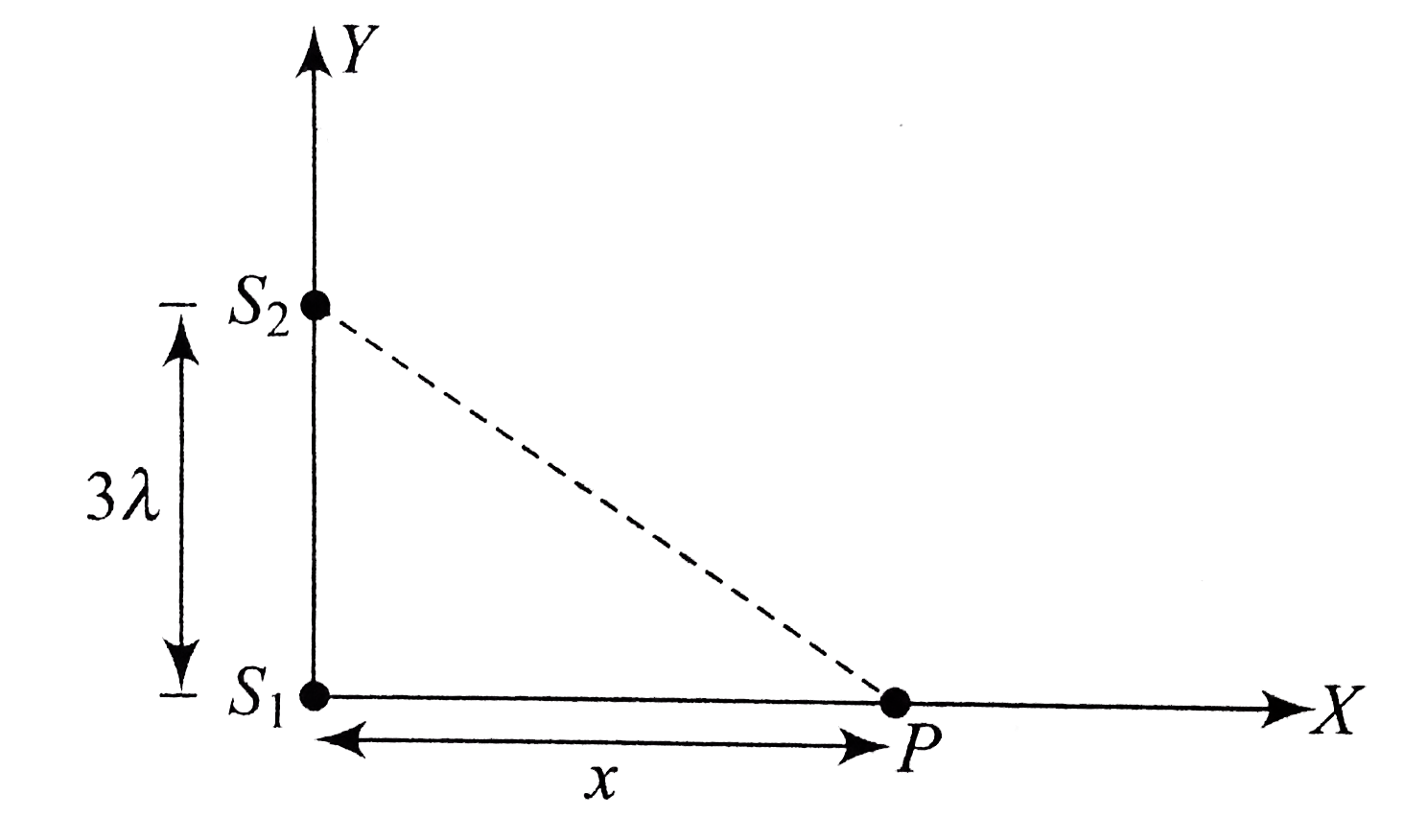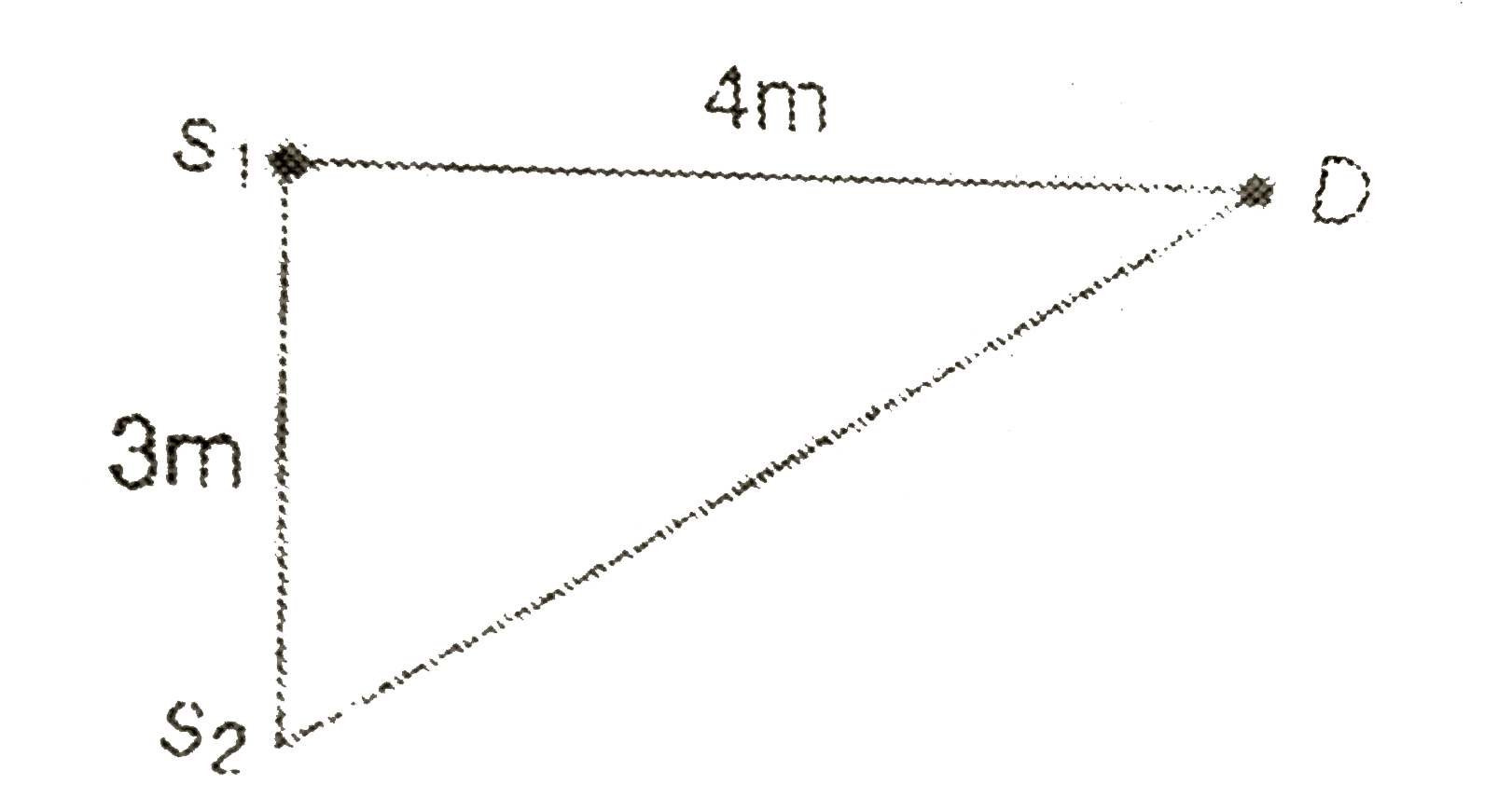An interference is observed due to two coherent sources S1 placed at origin and S2 placed at (0, 3l, 0). Here, λ is the wavelength of the sources. Both sources are having equal intensity I0. A detector D is moved along the positive x-axix.

Find x-coordinates on the x-axis (exchange x=0 and x=OO).
x=4λ
x=7λ/4
x=5λ/4
x=3λ
The correct Answer is:a.,c
At x=0, path difference is 3λ. Hence,third-order maximum will be obtained. At x=∞, path difference is zero. Hence, zero-order maxima is obtained. In between, first - and second-order maxima will be obtained. First order maxima:
S2P−S1P=λ or √x2+9λ2−x=λ
or √x2+9λ2=x+λ
Squaring this, we get x2+9λ2=x2+λ2+2xλ
Solving this, we get x=4λ
Second-order maxima:
S2P−S1P=2λ or √x2+9λ2−x=2λ
or √x2+9λ2=(x+2λ)
Squaring both sides, we get
x2+9λ2=x2+4λ2+4xλ
Solving this, we get x=54λ=1.25λ
Hence, the desired x-corrdinates are
x=1.25λ and x=4λ
Topper's Solved these Questions
- WAVE OPTICSBOOK - CENGAGE PHYSICSCHAPTER - WAVE OPTICSEXERCISE - Integer
3 Videos
- WAVE OPTICSBOOK - CENGAGE PHYSICSCHAPTER - WAVE OPTICSEXERCISE - Archives
4 Videos
- WAVE OPTICSBOOK - CENGAGE PHYSICSCHAPTER - WAVE OPTICSEXERCISE - Assertion- Reasoning
13 Videos
- THERMODYNAMICSBOOK - CENGAGE PHYSICSCHAPTER - THERMODYNAMICSEXERCISE - QUESTION BANK
34 Videos
- WAVESBOOK - CENGAGE PHYSICSCHAPTER - WAVESEXERCISE - QUESTION BANK
38 Videos
Similar Questions
An interference is observed due to two coherent sources S1 placed at origin and S2 placed at (0,3λ,0). Here, lambda is the wavelength of the sources. A detector D is moved along the positive x-axis. Find x-coordinates on the x-axis (excluding x=0andx=∞) where maximum intensity is observed.
View SolutionAn inteference is observed due to two coherent sources A and B separated by a distance 4λ along Y-axis, where λ is the wavelength of light. A detector 'D' is moved alog the positive X-axis. Find the total number of maxima observe on the X-axis excluding the points x=0 and x=∞ ?

View Solution
Knowledge Check
An interference is observed due to two coherent sources S1 placed at origin and S2 placed at (0, 3l, 0). Here, λ is the wavelength of the sources. Both sources are having equal intensity I0. A detector D is moved along the positive x-axix.

Total number of black points observed by the observer on positive x-axis isAtwoBfourCthreeDfiveAn interference is observed due to two coherent sources separated by a distance 5λ along Y-axis, where λ is the wavelength of light A detector D is moved along the positive X -axis The number of point on the X-axis excluding the points x=0 and x=∞ at which resultant intensity will be maximum are
A4B5C∞DzeroTwo coherent sources S1 and S2 area separated by a distance four times the wavelength λ of the source. The sources lie along y axis whereas a detector moves along +x axis. Leaving the origin and far off points the number of points where maxima are observed is
A(a) 2B(b) 3C(c) 4D(d) 5
An inteference is observed due to two coherent sources A and B separated by a distance 4λ along Y-axis, where λ is the wavelength of light. A detector 'D' is moved alog the positive X-axis. Find the totla number of maxima observe on the X-axis excluding the points x=0 and x=∞ ?

View SolutionLight waves from two coherent source arrive at two points on a screen with path difference 0andλ/2. Find the ratio of intensities at the points.
View SolutionLight from two coherent sources of the same amplitude A and wavelength λ illuminates the screen. The intensity of the central maximum is I0. If the sources were incoherent, the intensity at the same point will be
View SolutionLight from two coherent sources of the same amplitude A and wavelength λ illuminates the screen. The intensity of the central maximum is I0. If the sources were incoherent, the intensity at the same point will be
View SolutionIn the figure , the intensity of waves arriving at D from two coherent soucrces s1ands2isI0. The wavelength of the wave is λ=4m . Resultant intensity at D will be

View Solution
